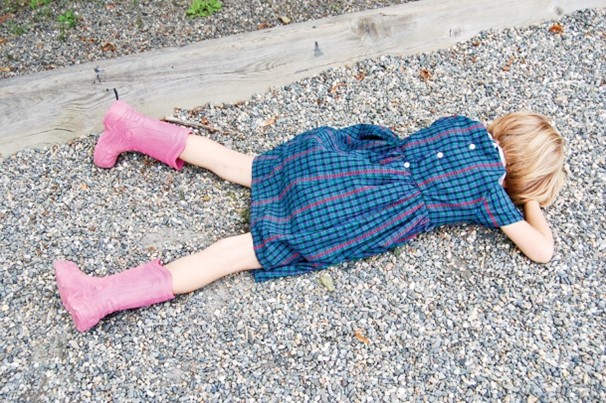Written By: Victoria Wood, OTR/L
Pediatric behavioral interventions are a hot topic. This is because development and growth depend on compliant behavior. Maladaptive behavior gets in the way of learning (as well as the peace and harmony of everyone involved). Whether the cause is pain, sensory processing difficulties, attention seeking, avoidance, anxiety, or fifty other variables, the behavior is what is noticed first. Behavior (both positive and negative) begins in infancy!
This starts in infancy. Babies cry to get their needs met. They have no other mechanism for alerting their caregivers that they are uncomfortable in some way. Infants quickly learn their crying gets attention. This can be a great survival mechanism for alerting others to hunger and pain. Very quickly this alerting mechanism can morph into maladaptive behavior patterns. A baby whose needs are quickly met when they cry, may start crying for non-essential reasons. Perhaps they are bored, lonely, itchy, overstimulated, nervous, or frustrated. The crying, screaming, kicking, pouting, and hitting are the behavioral reactions to an emotion or stimuli. The behaviors are noticed first, then comes the untangling to determine the cause. If you don’t experience enough crying already, check out this eight minute YouTube video compilation on crying babies:
People learn when they are in their “just right zone.” A person who is upset for any reason is not able to take in meaningful information while they are having an outburst. Besides the obvious distress that difficult, negative behavior brings to caregivers and the child involved, delayed development and learning needs to be the prime reason for correcting and solving these behavior issues.
 Children and Their Behaviors are Complicated
Children and Their Behaviors are Complicated
Now that is has been established that the ultimate consequence of negative behavior is delayed development, the focus shifts to fixing it. This is where things get complicated.
- Children do not come with an owner’s manual unique to each one
- What works for one child may not work for the next
- A strategy that works one day, may fail the next
- When there are 101 variables at play as to the root cause of the upset, there are an equal number of solutions
- Everyone seems to be an expert, but nothing is really working
- Interventions take time; therefore, it may be difficult to know what is working.
- It is difficult to control all the variables that effect a child – environment, social, basic needs, and sensory responsiveness, because people do not live in a bubble.
- Consistency is key; however, it is difficult to be consistent across all environments, interactions, caregivers, situations, and scenarios.
- The world is changing; expectations (too many or too few), social media, electronics, lack of physical exercise, stress, and time constraints, play a different role in input/output than 30 years ago
What Does the Research Say?
When dealing with behaviors, it is difficult to get definitive data. There are of course exceptions to this. It is much easier (although not fail proof) to measure a child ceasing crying because it has been fed or their pain addressed, versus their mood improving due to exercise, comfort, sensory stimulation, reduction in stress, or being given a treat. How can you know with 100% certainty that it was really the treat that caused a change in mood, versus some extra attention, a change in environment, a soothing voice, rocking, or some other variable you weren’t even sure you were providing?
It Gets Even More Complicated
There are times when the root cause of the behavior seems obvious, but it is not. Perhaps what seems to be the simple solution, is not the right choice? For example: today my student spit at me because I was trying to get him to cut and color, and he did not want to. What would seem to be the obvious cause – he did not want to participate, might not be the right answer. The simple solution was to let him go and play alone with his preferred toy, but was this the right choice?
There is more to this child than not wanting to participate. At home he is not made to participate. He is used to getting his wants met instantaneously. My student lacks the skills to perform the task I am asking, therefore easily becomes frustrated and acts out. He is unable to communicate his wants and needs.
Letting him go and play alone makes my life easier (and his), but reinforces the spitting behavior, and robs him of the opportunity to learn. He will continue to behave in this manner until something changes.
If you are nodding your head in agreement, and just as frustrated as the children you are caring for (personally and professionally), you are not alone. The good news is, often once the root cause of the behavior is addressed, the behavior will diminish on its own. An easy example is: once a hungry child is fed, their crying stops. A more difficult example is: filling the sensory bucket of a child with sensory processing difficulties often minimizes the maladaptive behaviors. If this has left you with more questions than answers, feel free to check out my upcoming webinar on June 19th, Pediatric Behavioral Interventions. In this course clinicians will dig to the root cause of maladaptive behavioral patterns, and learn effective treatment strategies to remediate or prevent these issues. Learn why differentiating between sensory and behavioral reactions makes a difference. Clinicians who can identify the root cause of difficulty are able to treat these problems quicker and more effectively.
Explore online continuing education courses from Victoria below:
Sensory-Based Feeding Strategies
Sensory Diets Effective Creation and Implementation
Sensory Processing Disorder in Adults
Visit summit-education.com for more information.


